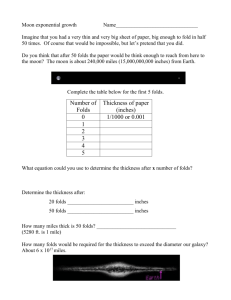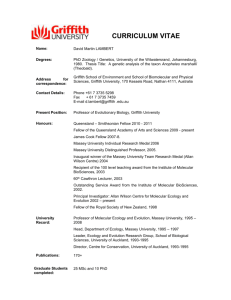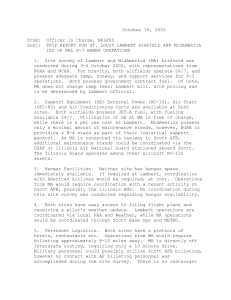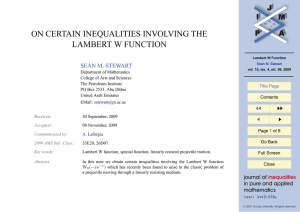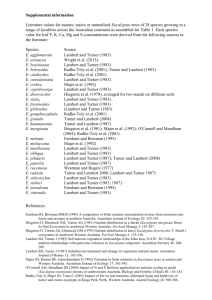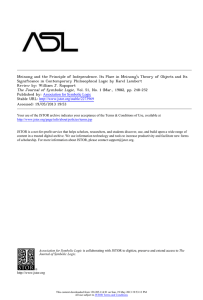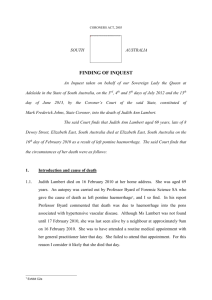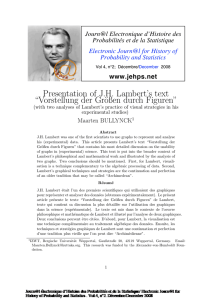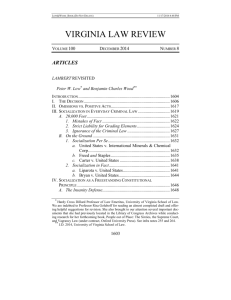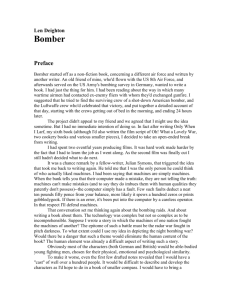essay - Linda Ganjian
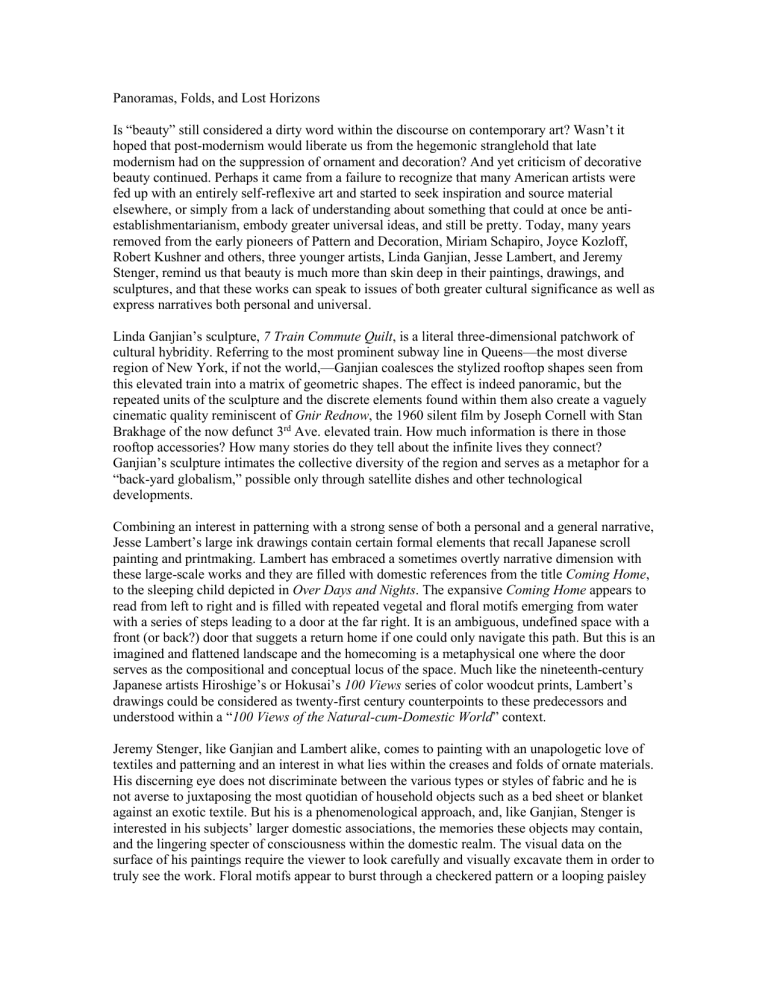
Panoramas, Folds, and Lost Horizons
Is “beauty” still considered a dirty word within the discourse on contemporary art? Wasn’t it hoped that post-modernism would liberate us from the hegemonic stranglehold that late modernism had on the suppression of ornament and decoration? And yet criticism of decorative beauty continued. Perhaps it came from a failure to recognize that many American artists were fed up with an entirely self-reflexive art and started to seek inspiration and source material elsewhere, or simply from a lack of understanding about something that could at once be antiestablishmentarianism, embody greater universal ideas, and still be pretty. Today, many years removed from the early pioneers of Pattern and Decoration, Miriam Schapiro, Joyce Kozloff,
Robert Kushner and others, three younger artists, Linda Ganjian, Jesse Lambert, and Jeremy
Stenger, remind us that beauty is much more than skin deep in their paintings, drawings, and sculptures, and that these works can speak to issues of both greater cultural significance as well as express narratives both personal and universal.
Linda Ganjian’s sculpture, 7 Train Commute Quilt , is a literal three-dimensional patchwork of cultural hybridity. Referring to the most prominent subway line in Queens—the most diverse region of New York, if not the world,—Ganjian coalesces the stylized rooftop shapes seen from this elevated train into a matrix of geometric shapes. The effect is indeed panoramic, but the repeated units of the sculpture and the discrete elements found within them also create a vaguely cinematic quality reminiscent of Gnir Rednow , the 1960 silent film by Joseph Cornell with Stan
Brakhage of the now defunct 3 rd Ave. elevated train. How much information is there in those rooftop accessories? How many stories do they tell about the infinite lives they connect?
Ganjian’s sculpture intimates the collective diversity of the region and serves as a metaphor for a
“back-yard globalism,” possible only through satellite dishes and other technological developments.
Combining an interest in patterning with a strong sense of both a personal and a general narrative,
Jesse Lambert’s large ink drawings contain certain formal elements that recall Japanese scroll painting and printmaking. Lambert has embraced a sometimes overtly narrative dimension with these large-scale works and they are filled with domestic references from the title Coming Home , to the sleeping child depicted in Over Days and Nights . The expansive Coming Home appears to read from left to right and is filled with repeated vegetal and floral motifs emerging from water with a series of steps leading to a door at the far right. It is an ambiguous, undefined space with a front (or back?) door that suggets a return home if one could only navigate this path. But this is an imagined and flattened landscape and the homecoming is a metaphysical one where the door serves as the compositional and conceptual locus of the space. Much like the nineteenth-century
Japanese artists Hiroshige’s or Hokusai’s 100 Views series of color woodcut prints, Lambert’s drawings could be considered as twenty-first century counterpoints to these predecessors and understood within a “ 100 Views of the Natural-cum-Domestic World
” context.
Jeremy Stenger, like Ganjian and Lambert alike, comes to painting with an unapologetic love of textiles and patterning and an interest in what lies within the creases and folds of ornate materials.
His discerning eye does not discriminate between the various types or styles of fabric and he is not averse to juxtaposing the most quotidian of household objects such as a bed sheet or blanket against an exotic textile. But his is a phenomenological approach, and, like Ganjian, Stenger is interested in his subjects’ larger domestic associations, the memories these objects may contain, and the lingering specter of consciousness within the domestic realm. The visual data on the surface of his paintings require the viewer to look carefully and visually excavate them in order to truly see the work. Floral motifs appear to burst through a checkered pattern or a looping paisley
design folds back on itself, creating a dizzying undulating rhythm of densely layered elements in his pursuit of capturing the abstract of experience past.
The work of Ganjian, Lambert, and Stenger reminds us that beauty is more than only skin deep and may be found in the stylized shapes of rooftop objects, the repetition of a simple floral motif, and the everyday folds between the sheets. We should allow ourselves to enjoy the patterns and decoration found in their work, and if we look just a little bit farther, we can see these motifs as cultural signifiers—deceptive cyphers that require a closer reading. It is in these spaces—amongst the panoramic field, the crevassed folds, and the metaphysical horizon—where the true beauty of this work is found.
Marshall N. Price
New York
March 2012






